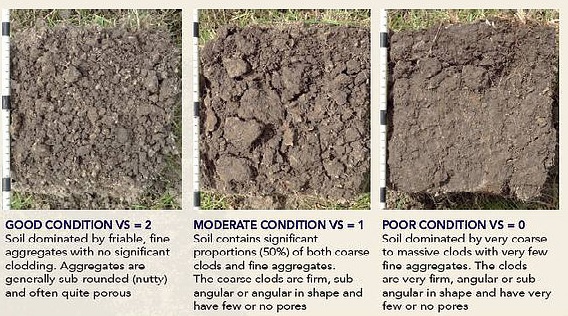Published September 15, 2019 | By Mike Petersen
Cover crops, No-Till corn-soy rotations versus corn on corn, Strip-Till corn on corn, Strip-Till corn-soy rotations; how do these differ, how do they effect soil quality changes in the way of improvement. A group of researchers at South Dakota State University looked into soil porosity in the surface soil horizons under residue removal at three differing rates to better understand soil function. In one of several articles I have read recently: Vahyala E. Ibrahim, Shannon L. Osborne, Thomas E. Schumacher & Walter E. Riedell (2018): Corn Residue Removal Effects on Hydraulically Effective Macropores, Communications in Soil Science and Plant Analysis
Link to this article: https://doi.org/10.1080/00103624.2018.1464187
For those of you that may want to read what Ibrahim et.al. wrote I have set the link above. It is of my summary of the article that harvesting corn residues in the corn years of this multi-year study that certain soil quality measurements were adversely affected. Water infiltration through microscopic to macropores in the surface soil horizons was diminished significantly. By that I read and have observed in the studies I personally ran at the Irrigation Research Foundation Farm near Yuma, Colorado 2001-2005 I do agree soil pores both contiguous and non-contiguous are reduced in number, surface area and continuity from surface into the subsurface layers. I made observations of visible pores 1mm up in size to 5mm in diameter.
The image above offers some visual idea of surface soil condition where soil aggregates are established and dominated with a wide range of pores to allow water infiltration and gaseous flow.
Now what does that have to do with price of tea or coffee at the local diner? Pore space and pore size has everything to do with water infiltration, carbon exchange, oxygen exchange, carbon storage, microbial life as well as micro-invertebrates, soil aggregate stability (to remain resistant to soil erosion and breakdown) and about 5 other details. The physical attributes of soils that we take for granted too often when folks drone on and on about cover crops. Cover crops are important, do not get me wrong here, yet I as a soil scientist want you to understand measurable parameters in soil health and quality provide concrete evidence to whether soils are improving, sustaining or declining.
Ibrahim et. al. observed when “the initial reduction in λΔψ following corn residue removal in high residue removal (HRR) followed by soil surface recovery the following year suggests that inclusion of decaying corn residue is critical in the maintenance of hydraulically functional macropores in this fine textured soil.” Something of an ahh-hah statement. I am not making fun at all here. Having the right soil pore sizes for the soil to breathe and allow more free water movement into the soil profile is vital to any crop to grow and go to yield.
I have discussed here in Precision Tillage.com before about pore space and how Strip Tillage creates a great environment for water infiltration. We observed with loam textured soils, strip tilled and no over-the-winter crop residue removed by grazing at the Irrigation Research Foundation; soil porosity increased in the guess rows 4.5X to 7X over the four year study and water infiltration in near saturated conditions 2.5 to 4.8X. There are several other facts and conclusions we can make from Ibrahim et.als article.
In a wet year like this one in places of the Great Plains under natural rainfed conditions this kind of information and data has a big impact. Under irrigated condition maybe even more so.
